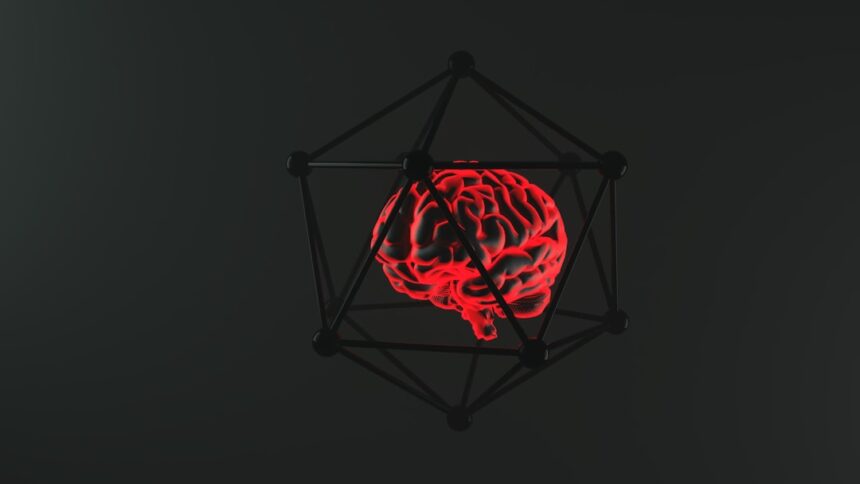The amygdala, a small almond-shaped cluster of nuclei located deep within the temporal lobes of the brain, plays a pivotal role in how you process emotions, particularly fear.
Understanding the amygdala is crucial for grasping how you experience fear and anxiety, as well as how these emotions can shape your interactions with the world around you.
As you delve into the intricacies of the amygdala, you will discover its profound impact on your emotional landscape. It acts as a sentinel, constantly scanning your environment for potential threats and triggering appropriate responses. The amygdala’s influence extends beyond mere survival instincts; it also plays a significant role in forming memories associated with emotional experiences.
By exploring the anatomy and functions of the amygdala, you can gain insights into how it shapes your emotional responses and behaviors.
Key Takeaways
- The amygdala is a key brain structure involved in emotional processing and fear conditioning.
- It plays a crucial role in fear memory formation and is involved in the neural circuits of fear conditioning.
- Neurotransmitters such as dopamine and serotonin play a significant role in fear conditioning and the amygdala.
- Dysfunction of the amygdala can have a significant impact on fear conditioning and emotional processing.
- The amygdala is implicated in PTSD and anxiety disorders, making it a target for therapeutic approaches in fear conditioning.
The Anatomy and Function of the Amygdala
The amygdala is composed of several distinct nuclei, each contributing to its multifaceted role in emotional processing. The lateral amygdala, for instance, is primarily involved in receiving sensory information, while the central amygdala plays a crucial role in orchestrating behavioral responses to perceived threats. This intricate architecture allows the amygdala to process complex emotional stimuli and generate appropriate reactions, making it an essential component of your emotional regulation system.
Functionally, the amygdala is deeply intertwined with other brain regions, such as the prefrontal cortex and hippocampus. This connectivity enables it to integrate emotional experiences with cognitive processes, allowing you to evaluate situations and make informed decisions based on past experiences. The amygdala’s ability to modulate emotional responses is vital for your survival, as it helps you navigate social interactions and respond to potential dangers effectively.
Fear Conditioning and the Amygdala

Fear conditioning is a fundamental learning process that involves associating a neutral stimulus with an aversive event, leading to a conditioned fear response. The amygdala is at the heart of this process, acting as a critical mediator that helps you learn from your experiences. When you encounter a threatening situation, the amygdala encodes the emotional significance of that event, allowing you to respond appropriately in the future.
During fear conditioning, the amygdala receives input from various sensory modalities, integrating this information to form a comprehensive understanding of the threat. This process not only enhances your ability to recognize danger but also strengthens your memory of the associated cues. As a result, when you encounter similar stimuli in the future, your amygdala triggers an automatic fear response, ensuring that you remain vigilant and prepared for potential threats.
The Role of the Amygdala in Emotional Processing
| Study | Findings |
|---|---|
| LeDoux et al. (1996) | Discovered the role of the amygdala in emotional memory consolidation |
| Phelps et al. (2001) | Found that the amygdala is involved in the processing of fear-related stimuli |
| Adolphs et al. (1994) | Identified patients with amygdala damage who had impaired recognition of fearful facial expressions |
The amygdala’s role in emotional processing extends beyond fear; it is also involved in a wide range of emotions, including happiness, sadness, and anger. By evaluating emotional stimuli and generating appropriate responses, the amygdala helps you navigate complex social situations and maintain emotional balance. Its ability to process both positive and negative emotions underscores its importance in your overall emotional well-being.
Moreover, the amygdala interacts with other brain regions responsible for higher cognitive functions, such as decision-making and social cognition. This interplay allows you to assess emotional situations more effectively and respond in ways that align with your goals and values. By understanding how the amygdala influences your emotional processing, you can gain valuable insights into your own behavior and reactions in various contexts.
Amygdala’s Involvement in Fear Memory Formation
Fear memories are crucial for survival, as they help you avoid dangerous situations in the future. The amygdala plays a central role in forming these memories by encoding the emotional significance of fearful experiences. When you encounter a threat, the amygdala activates neural pathways that facilitate the consolidation of fear memories, ensuring that they are stored for future reference.
This process involves not only the amygdala but also other brain regions such as the hippocampus, which is responsible for contextualizing memories. Together, these structures work to create a comprehensive representation of fear-inducing events, allowing you to recall specific details about the context in which they occurred. By understanding how fear memories are formed and stored, you can better appreciate the complexities of your emotional responses and their impact on your behavior.
The Neural Circuits Involved in Fear Conditioning
Fear conditioning relies on intricate neural circuits that connect various brain regions involved in processing fear-related information. The amygdala serves as a central hub within these circuits, receiving input from sensory areas and sending output to regions responsible for behavioral responses. This connectivity allows for rapid processing of threat-related stimuli and facilitates quick reactions when danger is perceived.
In addition to the amygdala, other brain structures such as the thalamus and prefrontal cortex play essential roles in fear conditioning. The thalamus acts as a relay station for sensory information, while the prefrontal cortex helps regulate emotional responses by providing cognitive context. Together, these neural circuits enable you to respond effectively to threats while also allowing for higher-order processing that can modulate your reactions based on situational factors.
The Role of Neurotransmitters in Fear Conditioning and the Amygdala
Neurotransmitters are chemical messengers that facilitate communication between neurons and play a crucial role in fear conditioning processes involving the amygdala. Key neurotransmitters such as glutamate and gamma-aminobutyric acid (GABA) are involved in modulating synaptic transmission within the amygdala’s neural circuits. Glutamate is primarily excitatory, promoting neural activity associated with fear learning, while GABA serves an inhibitory function that helps regulate excessive responses.
The balance between excitatory and inhibitory neurotransmission is vital for effective fear conditioning. An optimal level of glutamate activity enhances your ability to learn from fearful experiences, while adequate GABAergic inhibition prevents overreacting to perceived threats. Disruptions in this delicate balance can lead to maladaptive fear responses and contribute to anxiety disorders or other emotional disturbances.
The Impact of Amygdala Dysfunction on Fear Conditioning
Dysfunction within the amygdala can significantly impact fear conditioning processes and lead to maladaptive behaviors. When the amygdala becomes hyperactive or hypoactive due to various factors such as stress or trauma, it can alter how you perceive threats and respond emotionally. For instance, hyperactivity may result in heightened anxiety or exaggerated fear responses even in safe situations, while hypoactivity may lead to an inability to recognize genuine threats.
Such dysfunction can have profound implications for mental health. Individuals with anxiety disorders or post-traumatic stress disorder (PTSD) often exhibit altered amygdala functioning, which can exacerbate their symptoms and hinder their ability to cope with stressors effectively. By understanding how amygdala dysfunction affects fear conditioning, you can better appreciate the complexities of anxiety-related disorders and their underlying neurobiological mechanisms.
The Role of the Amygdala in PTSD and Anxiety Disorders
The amygdala’s involvement in PTSD and anxiety disorders highlights its significance in understanding these conditions’ neurobiological underpinnings. In individuals with PTSD, traumatic experiences can lead to persistent hyperactivity within the amygdala, resulting in heightened fear responses and intrusive memories associated with the trauma. This overactivity can make it challenging for individuals to differentiate between safe environments and those that pose genuine threats.
Anxiety disorders also demonstrate similar patterns of amygdala dysfunction. Individuals may experience excessive worry or fear responses triggered by non-threatening stimuli due to altered processing within this brain region. By recognizing the role of the amygdala in these disorders, you can gain insights into potential therapeutic approaches aimed at restoring balance within its neural circuits.
Therapeutic Approaches Targeting the Amygdala in Fear Conditioning
Given its central role in fear conditioning and emotional processing, targeting the amygdala has become a focus for therapeutic interventions aimed at alleviating anxiety disorders and PTSD symptoms. Various approaches have emerged that seek to modulate amygdala activity through pharmacological means or behavioral therapies. Cognitive-behavioral therapy (CBT) is one such approach that aims to reshape maladaptive thought patterns associated with fear responses.
By helping individuals confront their fears gradually while providing coping strategies, CBT can facilitate changes in amygdala functioning over time. Additionally, medications such as selective serotonin reuptake inhibitors (SSRIs) may help regulate neurotransmitter levels within the amygdala, promoting more adaptive emotional responses.
Future Research Directions in Understanding the Role of the Amygdala in Fear Conditioning
As research continues to evolve, several promising directions are emerging regarding our understanding of the amygdala’s role in fear conditioning. One area of interest involves exploring how genetic factors influence individual differences in amygdala functioning and susceptibility to anxiety disorders. By identifying specific genetic markers associated with altered amygdala activity, researchers may develop targeted interventions tailored to individuals’ unique profiles.
Another promising avenue involves investigating how neuroplasticity—the brain’s ability to adapt—can be harnessed to promote healthier emotional processing through interventions such as mindfulness or exposure therapy. Understanding how these practices influence neural circuits involving the amygdala could lead to innovative therapeutic strategies aimed at enhancing resilience against anxiety-related conditions. In conclusion, your exploration of the amygdala reveals its critical role in shaping emotional experiences and responses to fear.
By understanding its anatomy, functions, and involvement in various psychological conditions, you can appreciate how this small yet powerful structure influences your daily life and interactions with others. As research continues to advance our knowledge of the amygdala’s complexities, new therapeutic approaches may emerge that offer hope for those struggling with anxiety disorders or PTSD.
In exploring the intricate relationship between the amygdala and fear conditioning, it’s essential to consider the broader context of how our brains process emotions and memories. The amygdala plays a crucial role in the formation and storage of memories associated with emotional events, particularly those related to fear. For a deeper understanding of these processes, you might find it insightful to read an article on the subject. One such resource is available on Unplugged Psych, which delves into various psychological phenomena and their underlying mechanisms. You can access this article by visiting Unplugged Psych. This site offers a wealth of information that can enhance your comprehension of how fear conditioning is intricately linked to the amygdala’s function.
FAQs
What is the amygdala?
The amygdala is an almond-shaped structure located deep within the brain’s temporal lobe. It is involved in the processing of emotions, particularly fear and pleasure.
What is fear conditioning?
Fear conditioning is a type of learning in which an individual learns to associate a neutral stimulus with a fearful or aversive event. This type of learning is often used to study the neural mechanisms underlying fear and anxiety.
How is the amygdala involved in fear conditioning?
The amygdala plays a crucial role in fear conditioning by processing and storing emotional memories. It is involved in the association of a neutral stimulus with a fearful event, as well as the expression of fear responses.
What happens in the brain during fear conditioning?
During fear conditioning, sensory information about a fearful event is processed in the amygdala, leading to the formation of a fear memory. This memory can then influence the individual’s emotional and behavioral responses to similar stimuli in the future.
What are the implications of studying the amygdala and fear conditioning?
Studying the amygdala and fear conditioning can provide insights into the neural basis of fear and anxiety disorders. It can also help in the development of treatments for conditions such as post-traumatic stress disorder (PTSD) and phobias.





